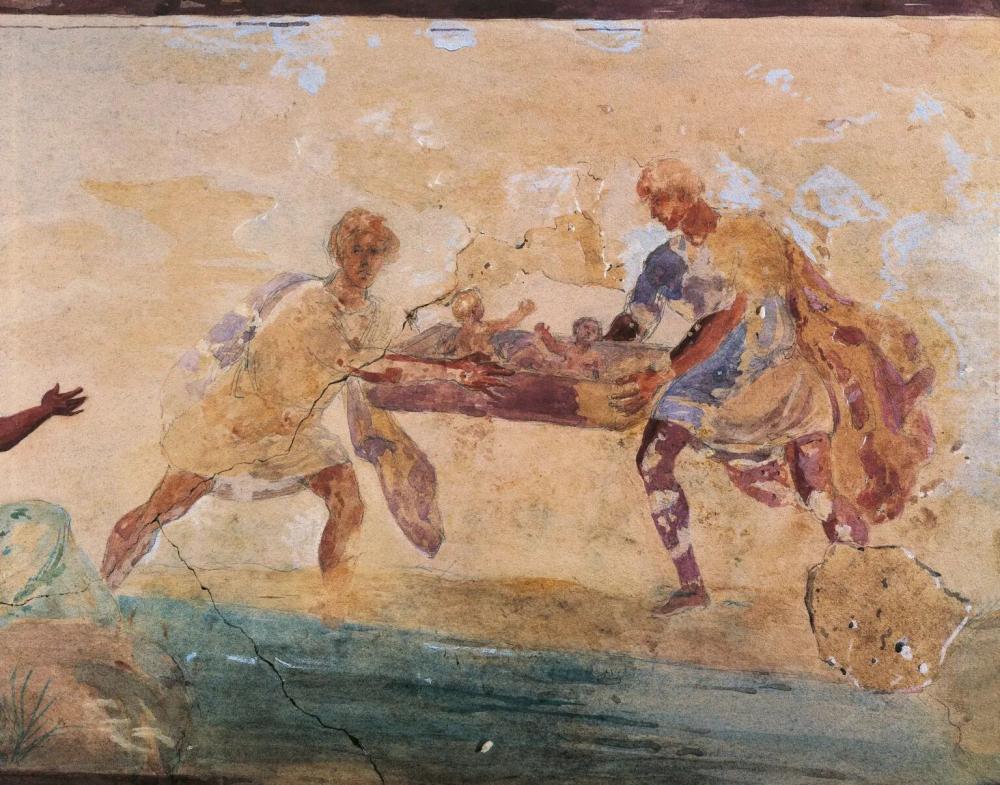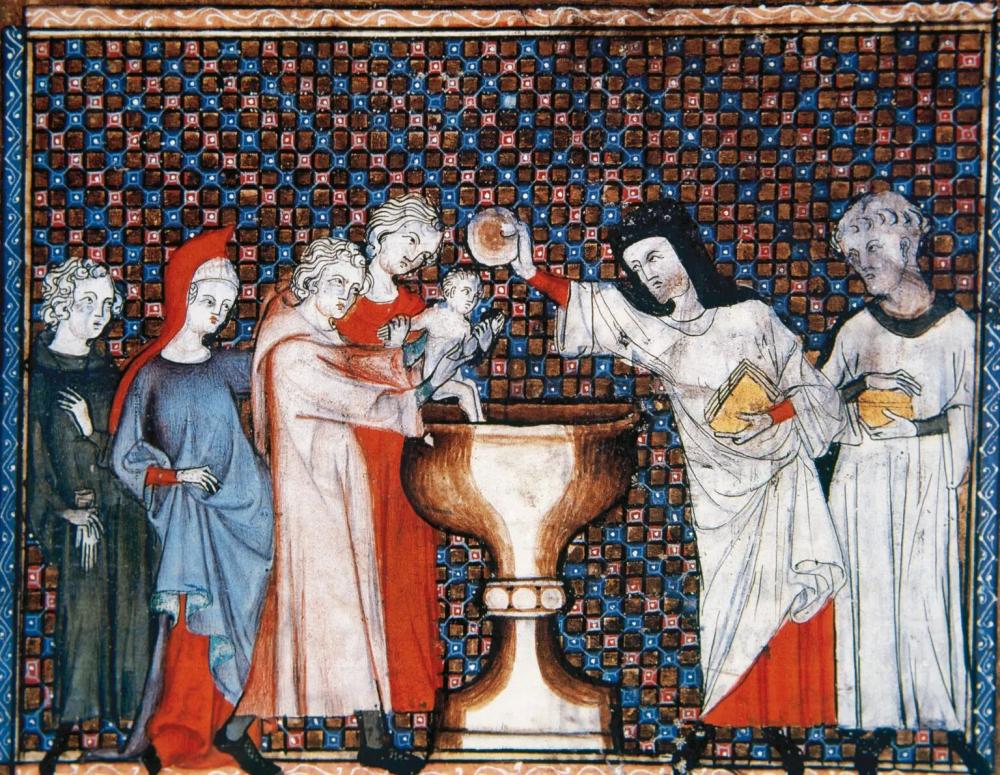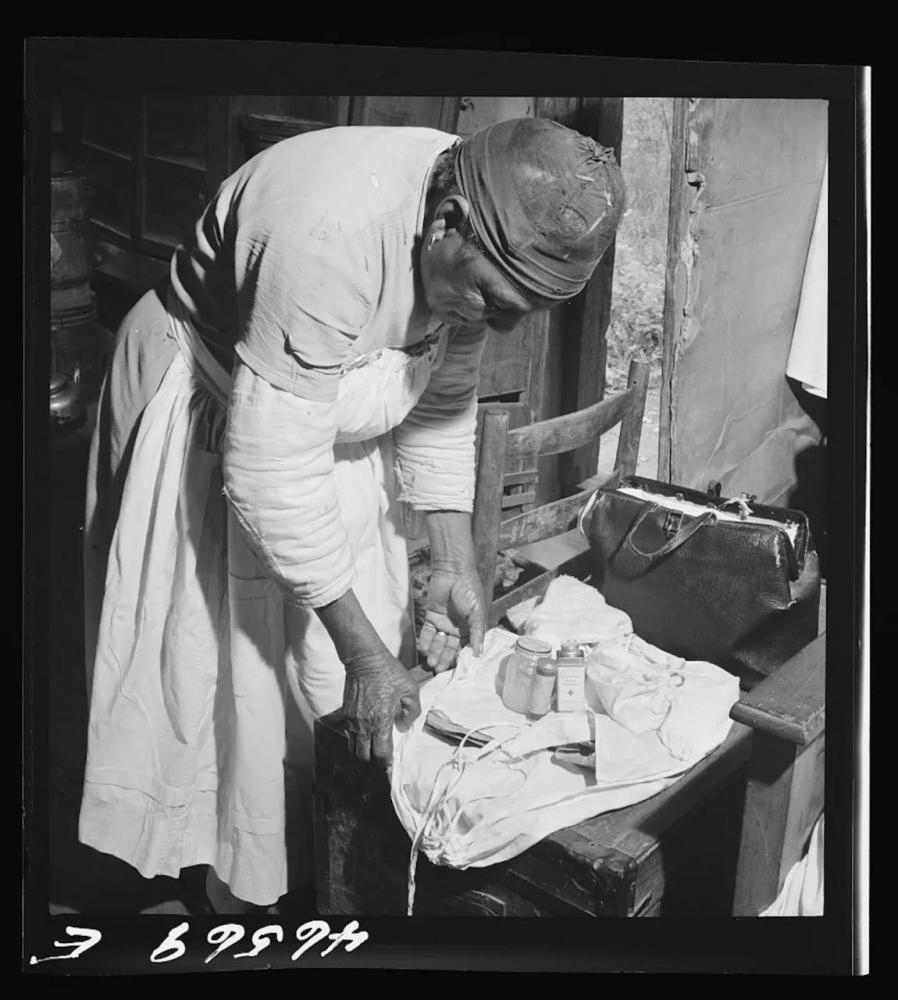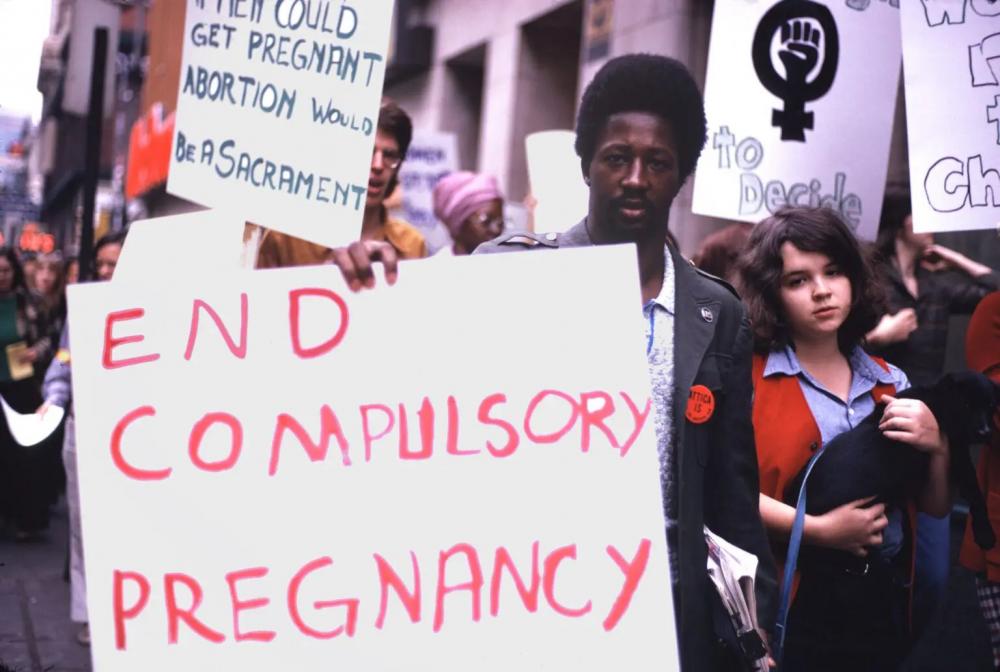AFTER THE U.S. SUPREME Court overturned Roe v. Wade in June, states have been increasingly grappling with what it means to be a person. Georgia recently passed a law granting personhood to fetuses as soon as there is a detectable heartbeat, while a judge in Arizona blocked a similar law. Meanwhile, a pregnant woman in Texas argued she can legally drive in the carpool lane because according to state law, her fetus is a person.
Arguments about fetal personhood have been key to the abortion debate since Roe v. Wade was argued in the 1970s. That landmark case determined a fetus became a person only when it was viable outside the womb. But Supreme Court Justice Samuel Alito wrote in his recent ruling that drawing the line of personhood at viability is “arbitrary” and “makes no sense.”
Personhood—the status or quality of being a person—sounds straightforward. But actually, humans have been wrestling with this complex idea for thousands of years.
How have beliefs about personhood and abortion changed throughout history? To investigate these questions, archaeologists and anthropologists have conducted ethnographic interviews, pored over written records, and searched for evidence in funerary sites. They have found that attitudes about personhood and abortion have shifted greatly over time, vary dramatically by culture, and are heavily influenced by prejudices and power struggles.
CULTURAL CONCEPTS OF PERSONHOOD
There is no universal concept of personhood; in fact, personhood isn’t even exclusive to people. In various cultures, personhood can be granted to nonhuman animals, objects, places, and even corporations. For example, Mande cultures in West Africa consider animals such as lions and leopards persons within specific clans. Conversely, personhood can be denied to human beings—in the case of slavery or of some people with disabilities.
In Western, industrialized societies today, a person is typically thought of as an indivisible individual, with their personhood largely fixed from birth, if not before. But many Indigenous and traditional cultures view personhood very differently. According to one archaeological and ethnographic review, numerous societies consider infants and even children to be “not yet persons.” Often, children have to pass through social and cultural milestones before being accepted into their community and granted personhood. For the Tallensi in Ghana, people can’t achieve personhood until after they die and become an ancestor.

Occupy Oakland participants protest “corporate personhood,” the idea that in some cases, U.S. law treats corporations as “artificial persons” with rights such as unrestricted spending on political campaigns. Eddie Codel/Flickr
In some cultures, a person may be a mosaic of divisible parts, and their personhood is believed to morph throughout their life. For the Wari’ in Brazil, personhood emphasizes the physical body and interconnectedness. An individual is created through the continual exchange of bodily fluids, and their personhood changes as fluids from other individuals are integrated into their bodies. Similarly, some cultures in Papua New Guinea see personhood as fluid, divisible, and exchangeable; each “person” is in a “constant state of becoming and being and can be thought of as fractal in nature,” writes archaeologist Nyree Finlay.
All the above examples come from anthropological studies of living cultures. But investigating personhood in past cultures, especially those with no written records, is more challenging. Most archaeological studies assessing personhood use mortuary remains to reconstruct social attitudes toward certain individuals as a proxy for community ideas of personhood.
For example, archaeologist Jessica Cerezo-Román examined funerary contexts among the ancient Hohokam in what is now Arizona and found shifts in concepts of personhood over time. In the pre-classic period, the Hohokam distributed cremated remains as possessions among social networks, suggesting they had a relational sense of self and considered remains to be part person, part object. In the classic period, they deposited ashes as a single unit in a single place, indicating their views of personhood may have been more bounded and individualistic.
It’s difficult for archaeologists to study ancient abortion practices since fetuses are unlikely to be preserved. However, archaeologists do have evidence that infanticide has been practiced by a wide range of cultures since at least the last ice age. And ancient societies that practiced writing left behind intriguing insights about personhood and abortion.
PERSONHOOD AND ABORTION IN THE ANCIENT WORLD
Numerous written records from ancient Greece, Rome, and Assyria indicate that for the most part, the personhood of fetuses and young infants was delayed and not guaranteed. In ancient Greece, philosophers imagined the fetus as something similar to a plant, grown from male “seed” sowed into the “earth” of a female. They held varying views on when the fetus gained a soul (“ensoulment”) and, consequently, personhood. Some thought ensoulment occurred at fertilization, while others believed souls entered male fetuses at 40 days and female fetuses at 90 days.
In ancient Rome, personhood apparently was attained after birth. Roman texts indicate that following a birth, a family decided whether to keep the infant or expose it to the elements, leaving it to die or be rescued. There were no social or legal consequences for exposing an infant. If a family kept their child, the infant was not given a name until they were 8 or 9 days old, and there was no formal grieving period for the death of a child less than 1 year of age. Full social personhood was generally not bestowed on a child until age 10.

A fresco depicts Romulus and Remus, the mythical founders of Rome, being abandoned by a river. Exposing infants was a socially accepted practice in ancient Rome. DEA/A. DAGLI ORTI/De Agostini/Getty Images
Archaeological evidence also provides insights into the personhood of infants in this era. In Rome, infants were rarely buried with adults in community cemeteries, which might mean they were not considered fully part of the broader community because they had lesser personhood, though some archaeologists would interpret these findings differently.
The first known abortion laws appear in the Code of Hammurabi, written in Assyria in 1772 B.C. Assyrian women were punished for aborting their fetuses, but fathers were allowed to kill newborn babies, indicating the law was designed to control the woman’s right to choose rather than to protect the fetus.
In the Greco-Roman world, evidence broadly suggests abortion was accessible and permitted most of the time. The main contraceptive and abortifacient was a plant known as silphium, which was so popular it was minted on coins and driven to extinction. In cases when contraceptives or abortifacients weren’t accessible or successful, exposure or infanticide were options, though how often this occurred in the Greco-Roman world is a matter of debate within the archaeological community.
Greek and Roman law had little concern for the fetus. With only a few exceptions, abortions were legal and unprosecuted prior to the third century. In rare cases when abortions were brought to court, it was due to perceived damage to the husband or his estate, since the woman’s body and her unborn children were considered the property of her husband.
It’s no coincidence that laws against abortion were established at a state level only in the third century, when the Roman Empire was worried about outside threats to their lands and collective identity. The laws were introduced by Emperor Septimius Severus and Emperor Caracalla, who attempted to increase the Roman population by outlawing abortion and granting citizenship to all free men in the empire.
MEDIEVAL CONCEPTS OF ABORTION AND PERSONHOOD
By the Middle Ages in Europe, the fetus was still envisioned as a plant-like entity, but conceptualizations of ensoulment, and thus the beginnings of personhood, differed somewhat from ancient times. Texts indicate medieval Europeans believed ensoulment occurred in the womb, usually around four to six months when the mother felt the fetus “quickening,” or moving. From then on, fetuses had a social presence and existed in a state of limbo until they could be baptized. Infants who were stillborn or died before they could be baptized were said to exist in limbo for eternity.
This attitude is visible in the archaeological record. Infants who died prior to baptism could not be buried in consecrated ground, although archaeologists such as Barbara Hausmair and Eileen Murphy have demonstrated various ways people tried to circumvent these religious rulings. Baptism, in this way, can be seen as a marker of social personhood. As in earlier times, personhood was granted incrementally to the fetus and infant as they passed through important milestones.

A 14th-century miniature painting portrays a Christian baptism, which granted a kind of social personhood to babies in medieval Europe. PHAS/Universal Images Group/Getty Images
Despite the expanding power of the Christian church and the associated regulation of sexual lives, abortions still happened. As talk of abortion methods grew more private, abortion and contraception increasingly became the purview of women’s cultural and folk knowledge, particularly through midwives and “witches,” who were periodically persecuted. Herbs appear to be the main abortive method, according to multiple medieval medical and pharmaceutical texts.
Abortions could be legally prosecuted, though the severity of punishment varied. Abortions motivated by adultery were considered heinous, while those due to sexual assault may not have been punished at all. In most cases, the Catholic church implicitly condoned abortions that occurred before the quickening of the fetus until 1869. Broadly, attitudes toward abortion were less about the fetus itself and more about regulation and control. As historian Roland Betancourt states, abortion in medieval times was “intimately associated with a patriarchal control of lineage and reproduction.”
PERSONHOOD AND ABORTION IN THE 19TH-CENTURY UNITED STATES
In many regions in the Western world, the 19th century was a time of change for ideas surrounding fetal personhood. Developing medical science and obstetrical research moved concepts of fetal development away from plant-like natures and toward new concerns over the welfare of embryos.
The quickening of a fetus remained an important marker of initial personhood. But based on evidence of naming conventions, it appears that attaining full personhood was a gradual process and not universally granted. According to birth and death records, one in five infants who died during birth or in the immediate weeks after did not have a recorded name; they were listed simply as “deceased infant.”
Abortions were illegal only after the quickening; prior to that, surgical and herbal remedies were readily available and blatantly advertised by unregulated providers. Abortion was both common and lucrative. “Contemporary accounts suggest that one in five 19th-century pregnancies may have ended in abortion,” writes archaeologist Andrea Zlotucha Kozub.
This is supported by archaeological evidence. The remains of fetuses discovered in privy shafts in New York City have been interpreted as evidence for abortion, as have glass bottles of abortion pills found in middle-class people’s outhouses. An estimated 75–90 percent of abortions performed during this time were procured by married women who already had children, especially those from the White, Protestant middle class.
However, by 1880, every state had completely criminalized all forms of abortion—with exceptions for a woman’s health or to prevent her from dying. What changed? Essentially, it boils down to two factors: economics and racism.
Physicians were the leading anti-choice campaigners of the time. While some no doubt had genuine moral and medical concerns surrounding abortion, an anti-choice stance was also politically and economically convenient. Traditionally, contraception and abortion were primarily overseen by midwives and other “nonprofessional” practitioners of medicine. These skilled women—around half of whom were Black—represented significant competition for doctors.

A midwife prepares her kit to care for a patient in the U.S. state of Georgia in 1941. Jack Delano/ Library of Congress
After the American Medical Association formed in 1847, the group moved to demonize abortion and make it illegal, thereby establishing the medical profession as morally and scientifically superior to traditional female-led reproductive health care. By marginalizing midwifery and criminalizing abortion, these physicians protected their financial interests. More women having more children led to more business for male physicians, who had positioned themselves as the sole providers of obstetrical care.
The improving access to contraceptives and abortifacients in the first half of the 19th century led to a declining birthrate, especially among the White, Protestant middle class. This, occurring around the same time Black people who were enslaved gained freedom, created a panic among demographers and politicians who worried the White majority would lose its political and cultural dominance. By creating laws that regulated all women, it was hoped that more married, White women would produce more White children.
PERSONHOOD AND ABORTION IN THE 21ST CENTURY
In recent decades, technology has influenced perceptions of fetal personhood. Reproductive anthropologists have described how sonogram images have created an earlier “social birth,” which has shifted fetal personhood to earlier in gestation and impacted abortion rights. Some states in the U.S., for example, require patients to undergo a medically unnecessary fetal ultrasound prior to a pregnancy termination, with the aim of humanizing the embryo and convincing some women to change their minds.
Despite these technological shifts, it’s interesting to see how much hasn’t changed over time in regard to personhood and abortion.
The modern anti-choice movement has deep ties with white supremacy and white nationalism. This is echoed throughout history, from ancient Rome criminalizing abortions only when the empire needed a population boost, to the 19th-century U.S. outlawing abortion partly due to fears over transformations in racial demographics.

In 1974, a year after Roe v. Wade was decided, demonstrators marched in Pittsburgh, Pennsylvania, to defend reproductive rights. Barbara Freeman/Getty Images
In addition, as anthropologist Sophie Bjork-James noted in regard to her study of evangelicals, denying women autonomy over their reproductive choices preserves the current patriarchal order. This hearkens back to Bronze Age Assyria, when women were forbidden to abort their fetuses but men were allowed to commit infanticide, and to ancient Rome, when unborn children were the sole property of the father and anti-abortion literature centered on reining in women’s uncontrolled sexuality.
Throughout history and today, when it comes to abortion, issues of personhood are enmeshed with misogyny, prejudice, and the desire to control women to preserve power. After all, if the contemporary anti-abortion movement were purely about protecting life and personhood, it would simultaneously fund welfare programs, advocate for gun control, and support the abolition of the death penalty, among other things.
Ultimately, as anthropologist Linda Layne states, “personhood is fundamentally political.”
Brianna Muir is a master’s student in biological anthropology at the University of Central Florida. As an emerging bioarchaeologist, she is interested in how integrative approaches can be used to address questions of personhood, identity, and agency in the past. In particular, she investigates how these factors may have shaped and influenced a person’s lived experiences. Muir received her B.A. from the Australian National University in 2019 and has undertaken fieldwork and research in the Philippines, Vanuatu, and Australia.
SAPIENS is a digital magazine about the human world. It’s about how we communicate with one another, why we behave kindly and badly, where and when we evolved in the past, and how we live and continue to evolve today. It’s about the relationship between our laws and ethics, the cities we build, and the environment we depend on. It’s about why sex, sports, and violence consume and intrigue us, what life was like in centuries past, where we might be headed in centuries to come, and much more.
In January 2016, we launched SAPIENS with a mission to bring anthropology—the study of being human—to the public, to make a difference in how people see themselves and the people around them. Our objective is to deepen your understanding of the human experience by exploring exciting, novel, thought-provoking, and unconventional ideas.
Through news coverage, features, commentaries, reviews, photo essays, and much more, we work closely with anthropologists and journalists to craft intriguing and innovative ways of sharing the discipline with a worldwide audience. To expand our reach, we syndicate articles at The Atlantic, DiscoverMagazine.com, ScientificAmerican.com, and other publications. We are fully funded by the Wenner-Gren Foundation and published in partnership with the University of Chicago Press, while maintaining unconditional editorial independence.
SAPIENS aims to transform how the public understands anthropology. Every piece of content is grounded in anthropological research, theories, or thinking. We present stories and perspectives that are authoritative, accessible, and relevant—but still lively and entertaining.
We hope you will return often to SAPIENS, where we strive to regularly deliver fresh, delightful insights into everything human.
VISION:
Amplifying anthropological knowledge to build a more just and sustainable world.
MISSION:
Delivering trusted, compelling, and relevant anthropology stories to public audiences.
COMMITMENTS:
- Share a broad range of human stories with integrity and clarity
- Bring marginalized voices to the center of conversations
- Treat our community of writers, readers, and story subjects with empathy and respect
- Bridge academic and public spaces
- Help anthropologists become engaging storytellers through quality writing
- Demonstrate the value of anthropological knowledge in the wider world
- Confront what anthropology was, challenge what it is, and dream what it could be


Spread the word